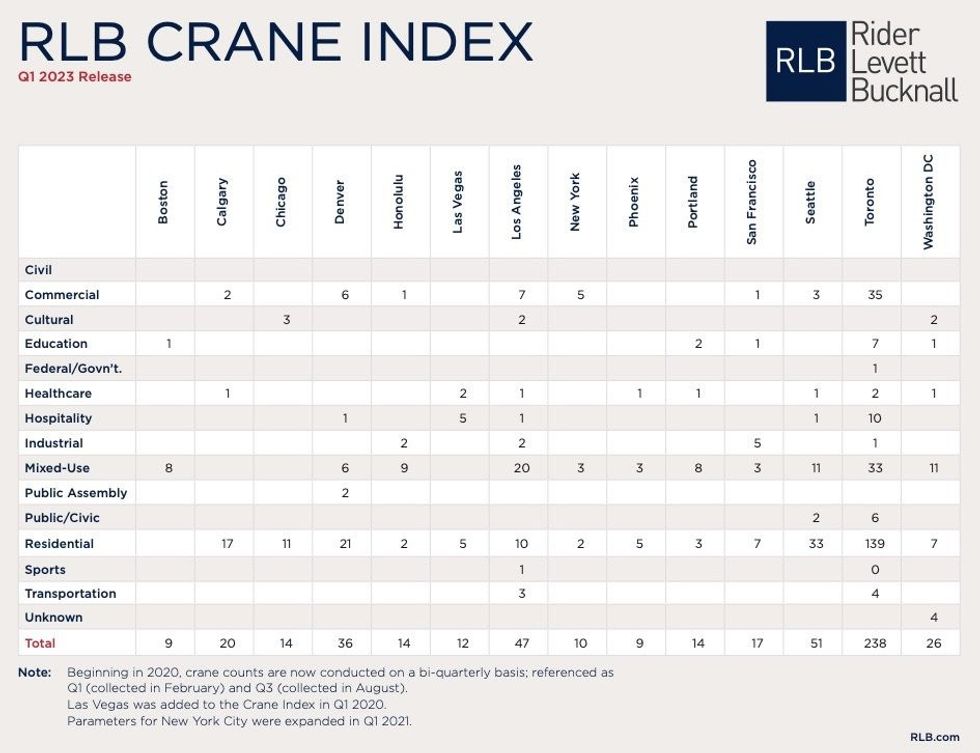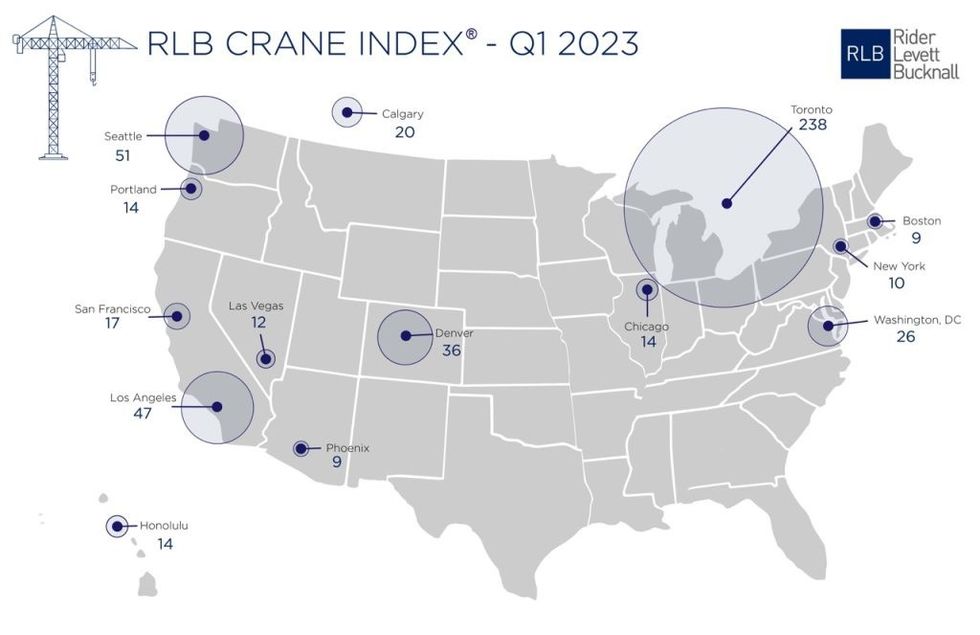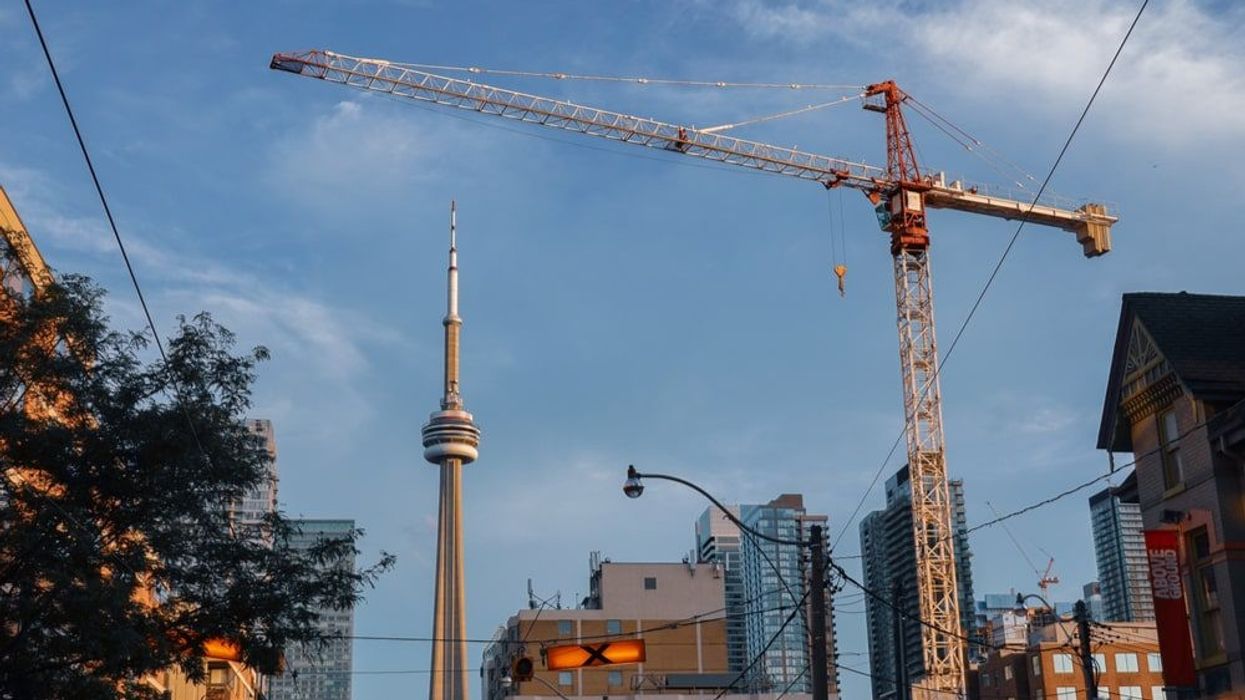Toronto has nearly 200 more cranes dotting its skyline than 14 other major North American cities.
According to the latest Crane Index from Rider Levett Bucknall (RLB), there were 238 cranes across Toronto in Q1 2023. The vast majority were dedicated to the residential construction industry, at 139, followed by commercial construction, at 35. Thirty-three were for mixed-use projects, while 10 were allotted to hospitality projects.
The significant number of cranes devoted to residential construction comes as the city works towards the Government of Ontario's target of building 285K new homes in Toronto by 2031.

Toronto's staggering number of cranes is not only the highest out of the 14 cities included on the index, but outpaces second-place Seattle's 51 cranes by 187, and third-place Los Angeles' 47 cranes by 191. Calgary, the only other Canadian city on the index, had 20 cranes in the first quarter of the year.
Released bi-quarterly, the Crane Index tracks the number of fixed cranes on construction sites across North America. The Q1 2023 iteration found an increase of 7.04%, or 34 cranes, from Q3 2022. While eight cities saw the number of cranes increase, four maintained the same count and two saw the number of cranes decline. Rider Levett Bucknall expects the number of cranes to remain high throughout 2023.

"Despite continued workforce challenges and economic uncertainties are still concerns for the coming year, we are continuing to see new projects break ground within our 14 key markets. This indicates that investments are continuing to be made into our cities," the index noted.
"Notwithstanding concerns for the housing market, residential and mixed-use projects make up 73% of the overall count. We anticipate the number of cranes to remain high into 2023. Despite uncertain market conditions, construction projects will continue to break ground, albeit at a cost."
Toronto's overall crane count increased by eight; even though 31 projects have wrapped over the last six months, this latest figure includes 37 new projects. By project type, residential saw the most significant increase, adding 13 cranes, while commercial projects dropped by six cranes.
Despite the notable number of cranes, Toronto's construction industry is facing a "monumental" labour shortage. To fill the gap left by the impending retirement of 43K construction workers, the Government of Ontario has pledged to double the number of skilled immigrants in the province by 2025.
In a Quarterly Construction Cost Report released alongside the crane report, RLB noted that residential construction in Ontario is being displaced by large infrastructure projects, which will likely cause completion delays to the former.
However, there is a high demand for building in the province, which is further supported by a growing population and increasing need to update infrastructure. As a result, the general forecast for Ontario's construction sector is "extremely favourable."





















